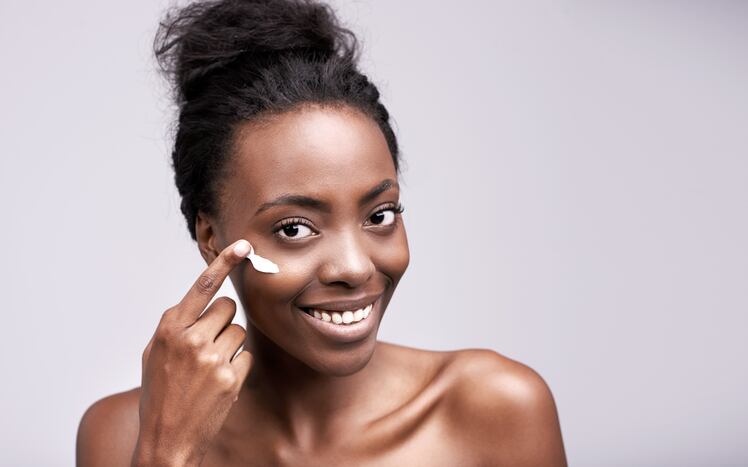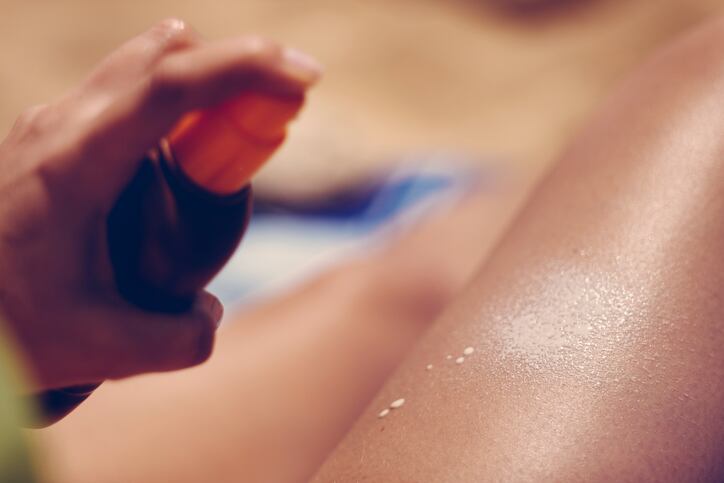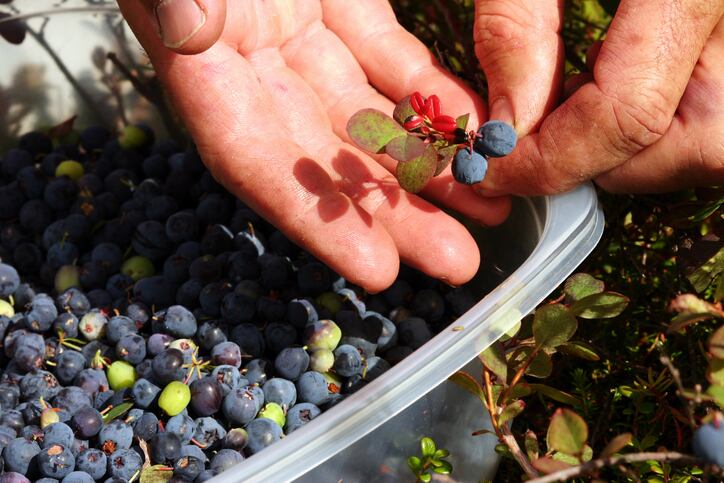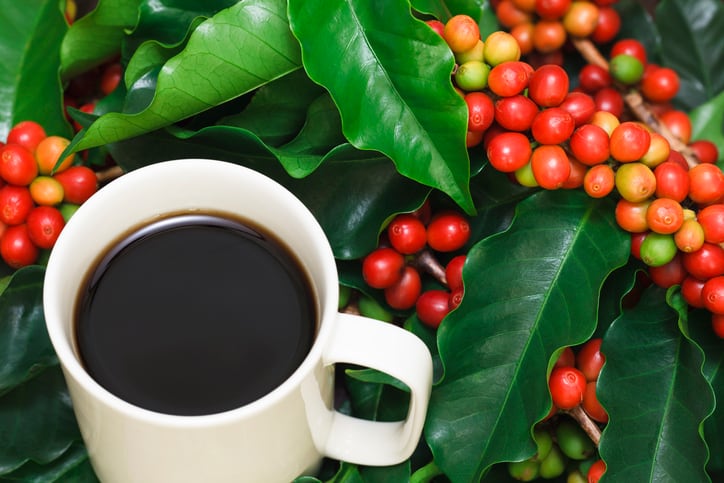Can you tell me a little bit about what is happening in the development of these protective products right now?
When it’s about protection, we need to distinguish between what the FDA is doing and what is regulated and what it's not regulated. We know that you cannot claim an SPF unless you have a UV filter. This is something that we need to keep in mind.
But then there is a series of botanical ingredients that definitely can help to reduce the impact of UV light to blue light to pollution.
All of these are called external aggressors, or environmental aggressors. Some of them are a wavelength, some of them, like with pollution, it’s more about chemical compounds. But all of them, when they reach the skin and even the hair follicle, they do cause damage, and this damage is associated with oxidative stress.
This oxidation translates to free radicals, into damaging the derma, damaging the proteins in the derma, damaging the DNA in the derma. This can be prevented to some extent by using UV filters, and when it’s about everything else to try to put ingredients that have antioxidants.
You’re probably familiar with things like vitamin E and vitamin C. These vitamins do have this capacity. Our body does have vitamin E and vitamin C because it's in our diet, you take in these vitamins from fruit and veggies.
But not everyone has the same diet, so when you create products that protect your skin, you want to add those vitamins into those products. Now we are turning to ingredients to help protect against oxidation.
Of course, it's not just vitamins, but it's also many other ingredients that are more belonging to the pigment/polyphenols family that also have the antioxidant capacity and also sometimes anti-inflammatory capacity. They protect against oxidation, but then they kind of soothe, because they also have anti-inflammatory potential. Oxidation causes damage, which is associated with inflammation. Those ingredients can do both, they protect, and they kind of help recover.
There's been a lot of research into botanicals that could potentially be helpful protectively. How is that translating into actual products on the market?
We can talk about the latest trends more than the UV because UV has been around for a long time, and of course the filters and some vitamins that can be associated with that protection.
But when you look at blue light, it's something that is popular recently because blue light is associated with the use of electronic devices, phones, tablets, TVs, even the screen of your car and many others.
Blue light is part of the spectrum of visible light. All this visible light, we thought it was not really affecting our lives and our skin. In a lot of experiments, mostly in vitro … they found increased oxidation, increased pigmentation, decreased skin hydration, barrier damage.
They also saw molecular markers of oxidation going up, they saw molecular markers of pigmentation going up. It looks like there is some biological effect that is translating into some damage.
How can we address that? What kind of ingredients? Some ingredients that I found quite interesting in doing this research in protection are those naturally derived that contain pigments.
Think about blueberry, they're blue. Think about some of the seaweed that grows in the ocean, they’re brown. All those pigments have a function that in general, in the plant, is to protect from UV, but they also found they can also absorb visible light like blue light.
There have been some experiments that really show that by using pigments derived from this seaweed or derived from these fruits, those pigments, those ingredients, can actually protect from blue light-induced skin damage.
But again, this is just science. This is just experimental. I don't think there are real-life clinical studies to prove blue light damage, but because we don't know, we want to make sure that just in case, we protect. There have been products containing these ingredients, containing seaweed-derived pigments or blueberry-derived pigments, or things like that, on the market with the claim of helping to protect from blue light.
Is there much of a notable difference in efficacy between botanical ingredients in protectives and synthetic protective ingredients?
I would say probably not, I don't think there is a major difference.
There is the trend of naturals, so people like to use more natural than chemicals. Our body is used to naturals, we don't eat synthetics. We need fruits and veggies. Synthetics and chemistry always feel like the body may have more difficulty removing them, and they’re very potent as well. That's why most of the drugs that you take are synthetic, very potent. But then also with a lot of side effects.
Naturals, in general, tend to have fewer side effects because they're recognized by the body unless you get a lot of it. In the end, it's really about the FDA, it’s about the regulators, it’s about the people that put this in the market to make sure that whether it's synthetic or natural, it’s safe.
But of course, no one is perfect, and some consumers may react differently. But in terms of efficacy, I would say that they're very similar. You can find synthetic vitamin E or a naturally derived vitamin E, but they pretty much do the same job.
In fact, some of these synthetics are now called natural-identical or nature-identical because they're basically the same molecule, just produced by synthesis.
What do you see as the big recent innovations in protective ingredients, as far as botanicals go?
I think it's more about the claims, concentrations and ways to derive these ingredients. There is a big push on sustainability, a big push on upcycling material. I don't know if this is considered technical innovation, but it is an innovation in terms of sourcing. So instead of taking something and subtracting it from the food chain, they take material that's usually a by-product and repurpose it into cosmetics.
They’re using more and more polymer from natural sources to create structural formulations that also help protect, and at the same time make the product better in terms of absorbency, in the skin or on the hair.
There is also the capacity to manipulate some of these natural molecules in different groups in order to make them the most stable. It's a little bit of manipulation, of natural extracts to be more stable. More effective delivery systems are also an innovation. When you take these ingredients and put them in a carrier that actually helps to make ingredients more stable, delivery to the skin increased the bioavailability.
I cannot point to a specific ingredient, specific innovation, but I would say that generally, these are the biggest elements in the natural territory that I see.
What else do formulators need to know about using botanical protective ingredients?
Of course, when it is about protection from pollution or blue light, there are ingredients that are capable of the mechanism that skin to increase the protection from oxidation, whether it’s induced by wavelength or is induced by chemicals.
My suggestion to formulators is to make sure that you have the right amount, work on the dosage. If you just sprinkle something, it's not gonna work. How do you decide the dosage? Based on the studies, based on the clinical study, based on what suppliers or the scientists have done.
The second point is definitely about stability reformulation because natural ingredients tend to evolve over time. There are innovations that may stabilize the formula. Make sure that your formula it's stable and effective because if the formula is not, the consumer will have a formula that is not together.
It takes more time, more work, more stability testing, but just make sure that from a safety point of view and efficacy point of view, you're solid enough to go to market. I would say take your time and make all the testing necessary to do that. Make sure that the preservation system of your formula is good so nothing is growing into it, so the consumer is not surprised.
All these typical elements that the formulators should know need to be pronounced when it's about formulating with natural ingredients. You need to take more care and more attention.
What do you see as the next step in botanical protective ingredients?
In general, it will be interesting to see if suppliers can concentrate that extract, make the extract more potent. If I know that my active molecules in that particular plant extract are concentrated to 1%, try to work on increasing the concentration. Maybe do an extraction running instead of 1%, get 5%.
Increasing the potency of your natural ingredients is usually good because you can reduce the dosage so it's going to cause less instability of the formulation and you can optimize the efficacy and sometimes also the safety.
Is there anything else that you want to add?
There is a big trend right now in ingestible. I know we were talking mostly about topical applications like creams, serums and whatever you can put on your skin or on your scalp. But there is a big push now also to consider ingestible like capsules with natural ingredients you can eat.
There is evidence that some of the ingredients may end up in your skin. There are studies published in different dermatological journals, just as an example, with tomato extract that contains a lot of lycopene, that is the red pigment. If you have a certain amount every day of those extracts delivered in a capsule as an ingestible eventually after a month or so, you'll start to see the lycopene sitting in your skin. Lycopene is actually a strong antioxidant, so it will protect your skin from what we just discussed.
There is an interest also from some scientists to look at what ingestibles do and developing ingestible products. So that you get a capsule, you get the cream and combining the two you can optimize your protection. Ingredients coming from inside and coming from the outside can nicely combine into a holistic approach to skin protection.
Of course, we have a generation that considers the place where they live and the world in general, with bigger attention on sustainability the world environment and the social aspect as well. That’s important when looking at natural in general, including the protection part.
There is also stress, reducing stress from pollution or extreme exposure to visible light. Anything that is stressing us out, it's gonna have an impact on our protection system. Skin is just part of our body, everything is connected. It's interesting to see that suppliers now are also developing botanicals that are addressing stress, that is influencing the skin, and influences protection.




